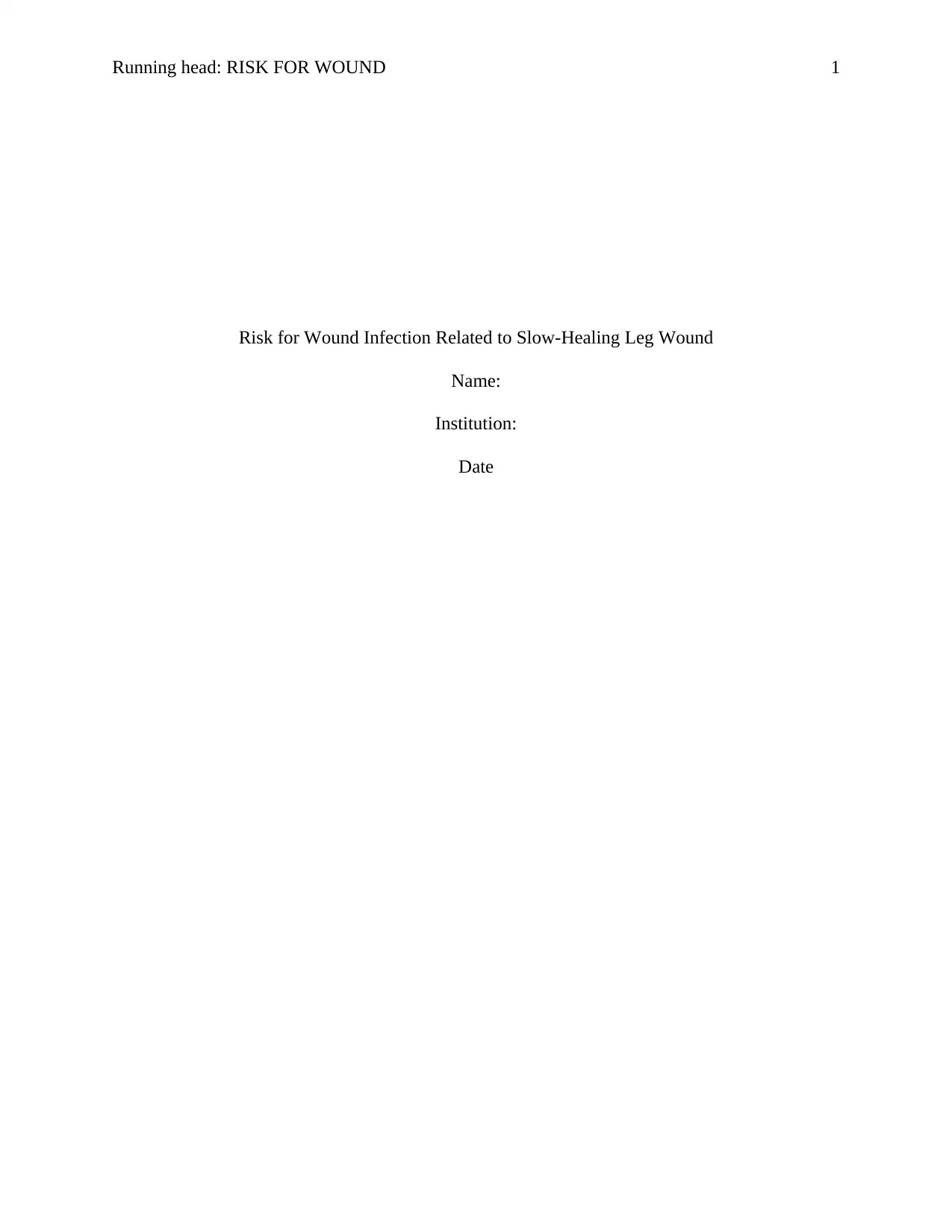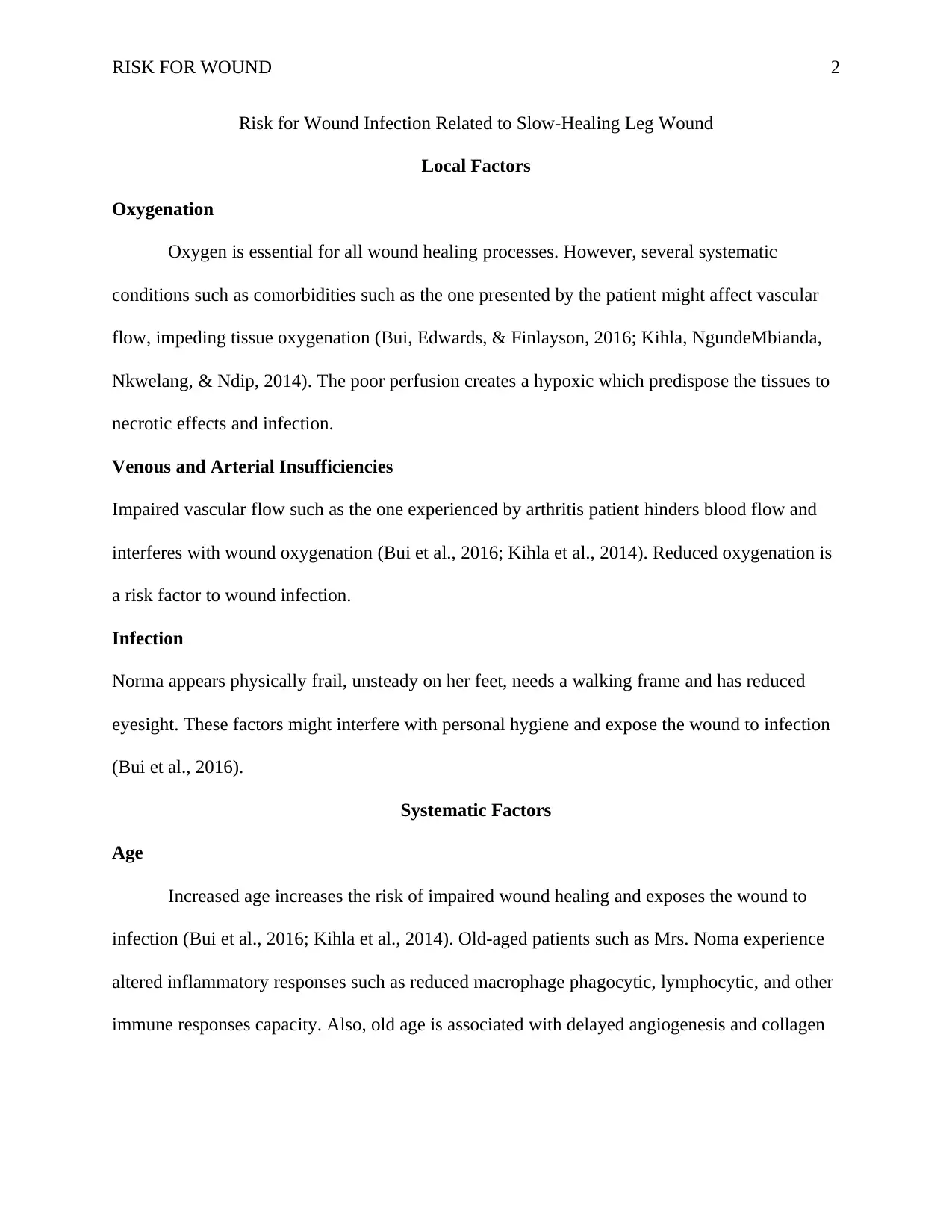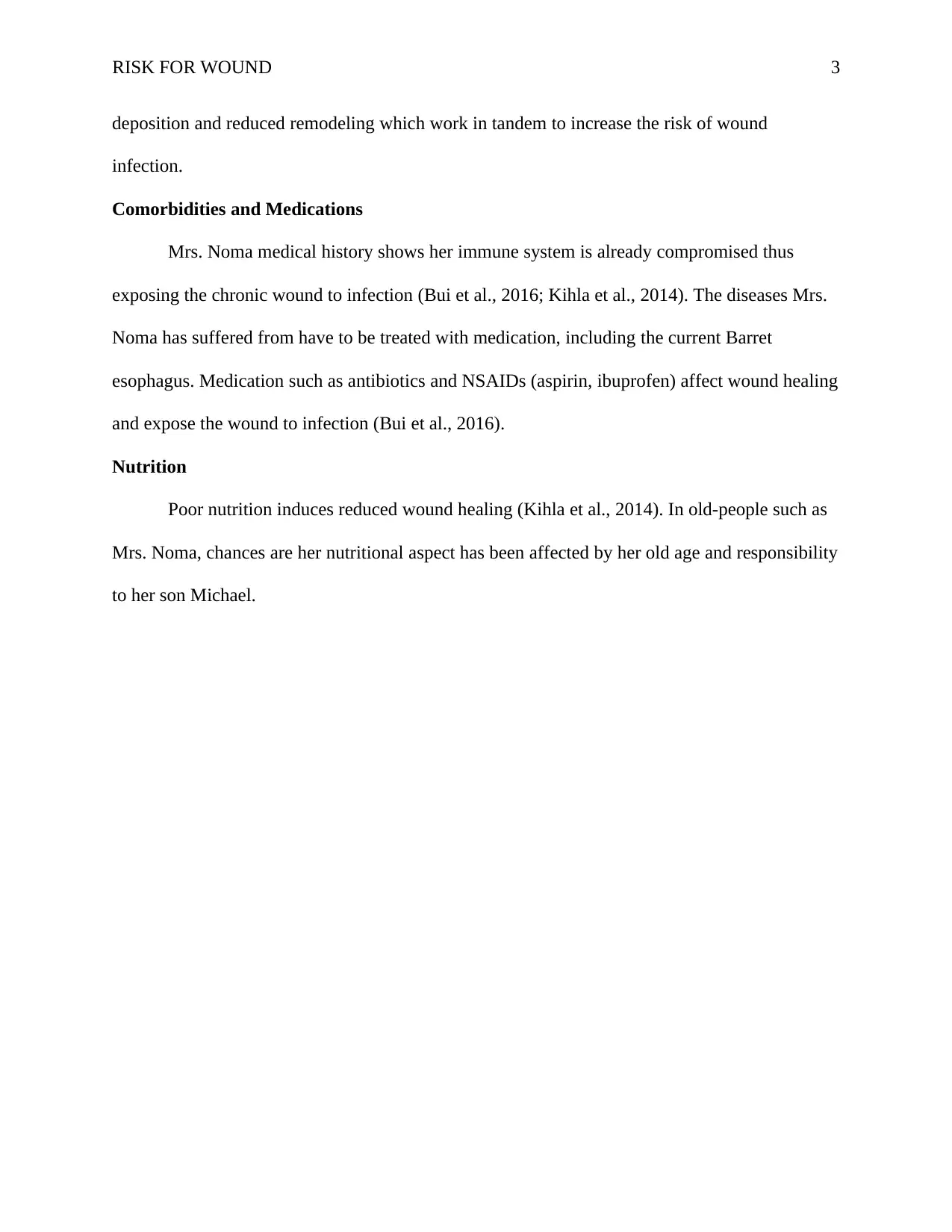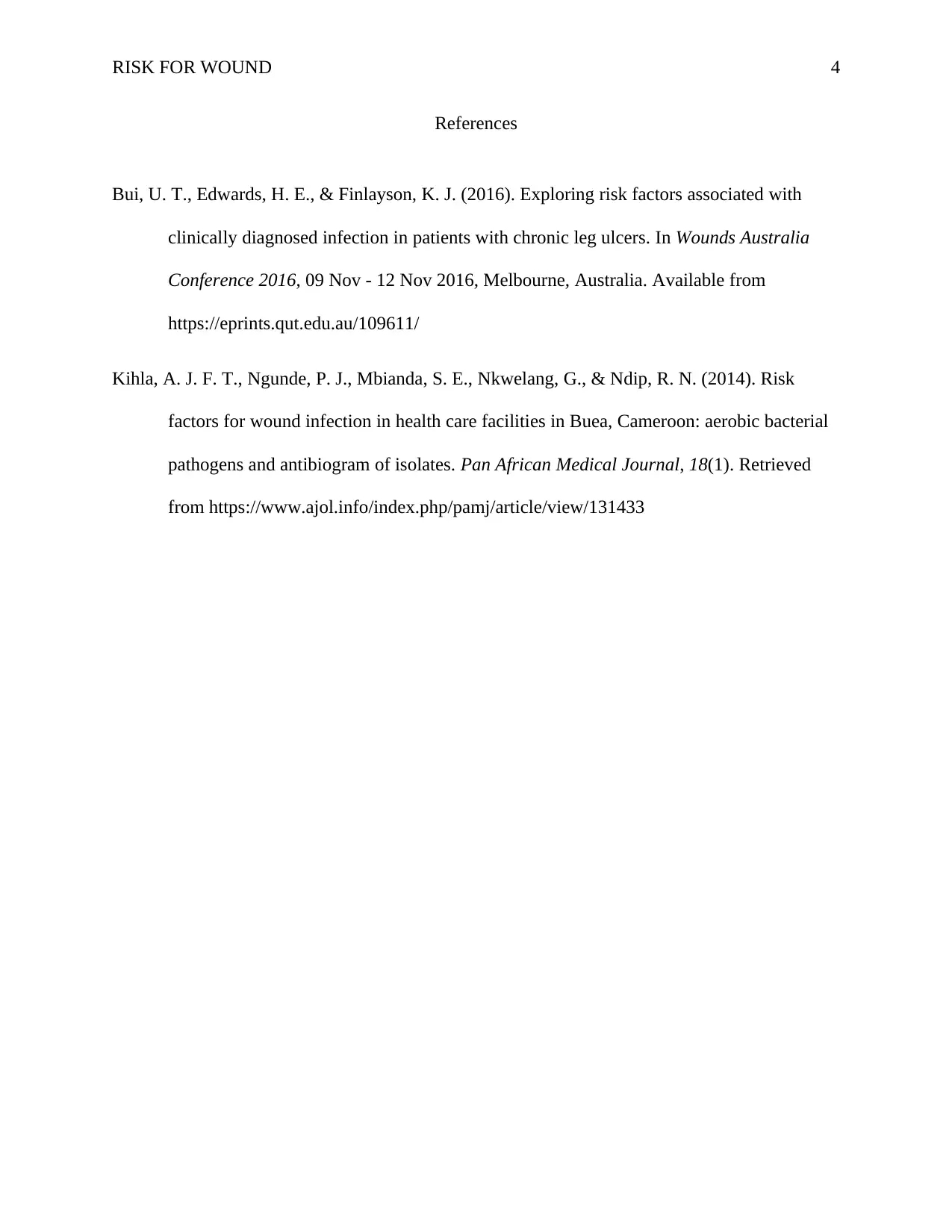Analyzing Risk Factors for Wound Infection in Slow-Healing Leg Wound
VerifiedAdded on 2023/06/06
|4
|536
|295
Case Study
AI Summary
This case study examines the risk factors associated with wound infection in a patient with a slow-healing leg wound. It explores local factors such as oxygenation, venous and arterial insufficiencies, and the risk of exposure to infection due to frailty and reduced eyesight. Systematic factors including age, comorbidities, medications, and nutrition are also analyzed. The case highlights how these factors can compromise the immune system, delay healing processes, and increase the susceptibility to wound infection. References to relevant research articles are included to support the analysis. Desklib provides access to this and other solved assignments to aid students in their studies.
1 out of 4










![[object Object]](/_next/static/media/star-bottom.7253800d.svg)